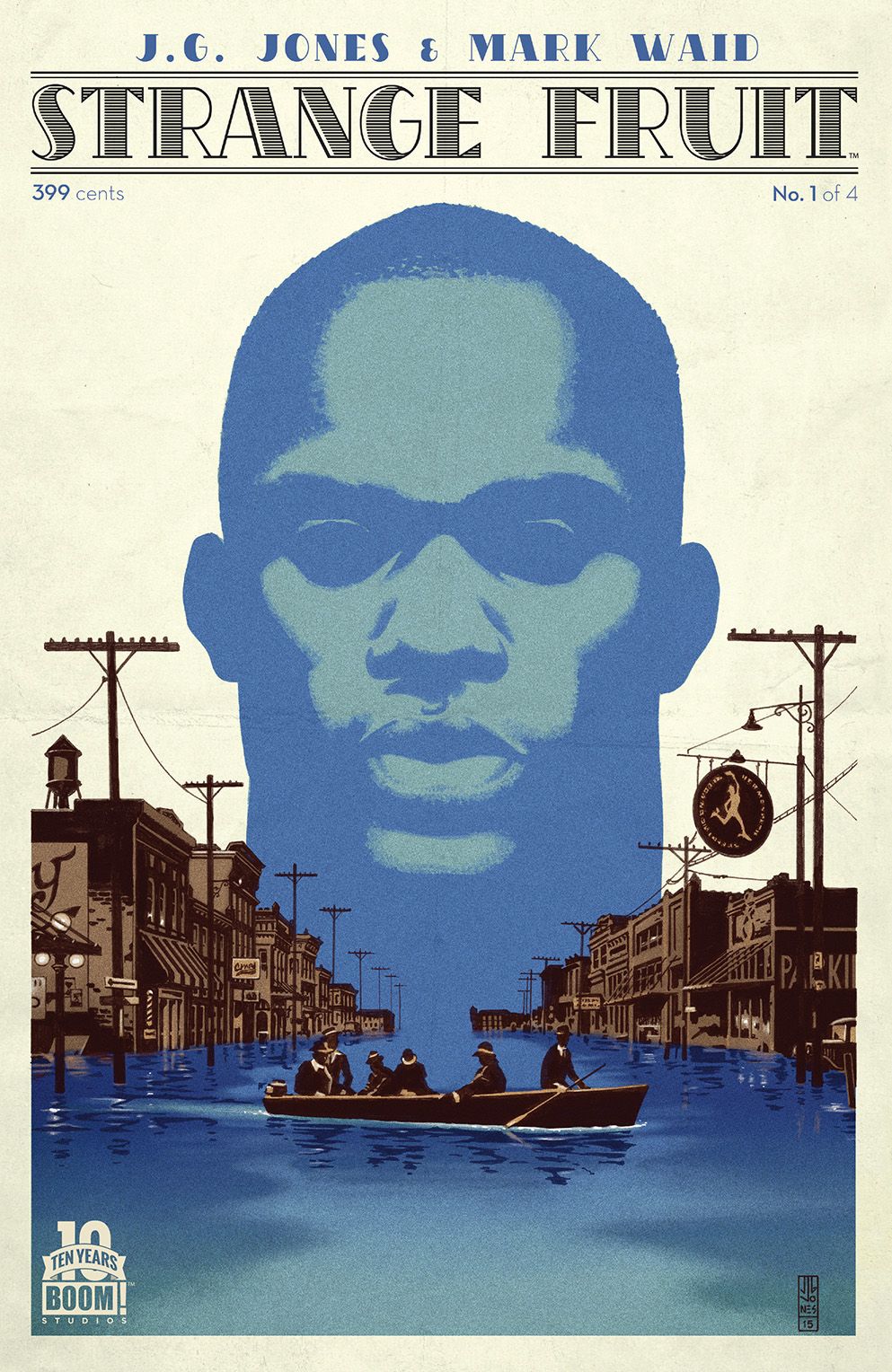An intense period piece sent in the tumultuous American south during the early 20th century, "Strange Fruit" #1 is a superman tale set against racism, poverty and cataclysm. Note perfect and patient, Mark Waid and J.G. Jones' script once again proves their status as two of the most versatile comics writers working today. The sorely missed Jones also provides art, delivering the most gorgeous painted work of his career. The medium suits him well; the pages are incredibly detailed and the thinner lines and open space afforded by the style really pulls his skill at guiding a reader's eye across a page into focus, and using the layouts of a page's worth of panels to create mise en scene also helps control and push a reader's emotions.
Some readers may be offended by the story, but only because the sensibilities of the times were themselves offensive. Waid makes no apologies nor pulls any punches throughout. There are several uses of the N-word, the KKK makes an appearance and the climactic scene involves an attempted lynching. These are scenarios that would make anyone upset, which is precisely why they work here. The initial plot of the book is realistic and embedded in the history of the country. Waid and Jones forsake melodrama in favor of historical fiction, using the environment and its inhabitants as keys to establishing the world of the book. When everyone is affected by intense flooding and tensions run high in an already volatile space, things never turn out well. Waid and Jones dial it up until it's about to crack, when a strange object falls from the sky, blowing the world and the book wide open. Elements of dark humor creep into the end of the issue, a welcome release from the depression that bled over the previous pages.
Jones' work is strong throughout the issue and his sense of composition is breathtaking. Pages subtly draw the reader's eye across the action, guiding them through scenes with a simple implied line or the connected arc of a shoulder in one panel flowing into the curve of smoke in another, pushing through the gutters and creating movement and reality in the blank space between. Certain pages are laid out as upside-down pyramids, drawing the external dangers further and further into the story, using selected perspective choices that are not only perfect for the moment but portend what happens next. Once the action opens up, Jones breaks into majestic splash pages and double-page spreads that herald the arrival of something larger than life, something bigger than what's already been in the world, something that dwarves the small minds of the men who fall in its path.
There is a lot happening in this issue as readers bounce from scene to scene, meeting many characters, and somehow Waid and Jones always make it feel like the story moves forward comprehensively. The writers hold up a mirror to a time in the United States when men, whether good or ill-intentioned, acted on frustration and fear. Well-known for his love of Superman, Waid takes the concept of an alien falling to Earth, placed in the era when the story was initially published, due south of Smallville. It's inspired and grounded in realism. Jones' work, though unchanging throughout the course of the story, further grounds the story through detailed paint work that also pays tribute to the majesty of the concept of superheroes, once the fantastic elements arrive in the book.
Provided the rest of the series is as stunning as this first issue, Waid and Jones should make room on their mantles for some Eisners. "Strange Fruit" #1 is a must read for anyone who is a fan of the medium. This could easily be a gateway story for new readers once collected. Do not miss this book when it arrives in stores on July 8.

